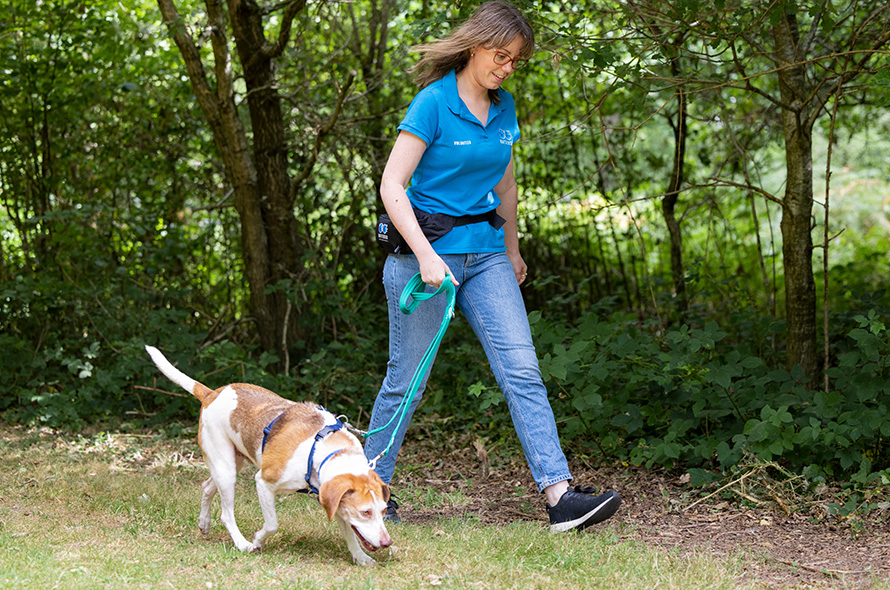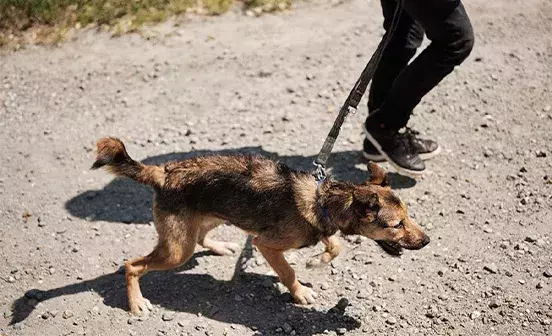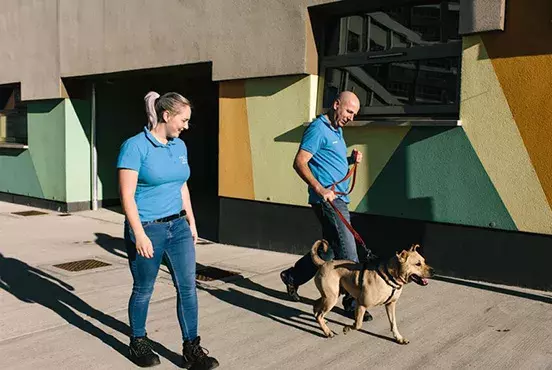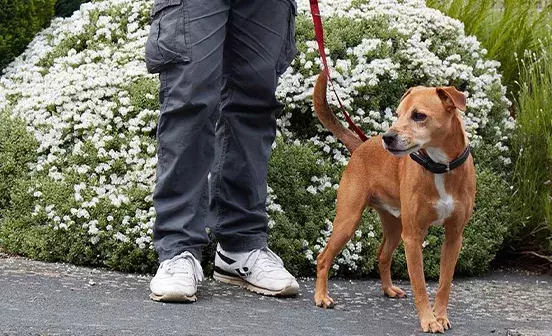'This Way’ can be used to tell your dog that you’re changing directions and you want them to follow. This can be really helpful if your dog is a bit nervous, gets frustrated on the lead, needs to work on loose lead training, or becomes easily overstimulated.
Before you start, you’ll need to decide which side you want your dog to walk on. In this example we’re going to start with our dog on the right.

Get into a starting position
Hold the lead in your left hand and treats in your right hand. Using your right hand, use a treat to slowly guide them to stand next to you, and then reward them. The lead should be crossed over your body and held loosely with your left hand - this is your starting position. If they move away, lure them back with another treat and reward again. Reward them again when they stay next to you.
Practice walking with a loose lead
Encourage your dog to walk on a loose lead by taking a few steps forward and rewarding them when they’re next to you. If your dog moves away from your side, stand still, and lure them back to your starting position.
Try not to pull on the lead to get your dog to come back- instead, stand still and use a treat to lure them. Repeat this exercise until your dog is walking with you on a loose lead.
Introduce turns
Once your dog is comfortable walking on a loose lead, you can introduce turns. To start, hold a treat in front of your dog’s nose. Move the treat slowly as your dog follows, until you’re facing the other way. Say ‘yes’ and reward with the treat in your hand. Repeat until your dog follows your hand as you turn.
Introduce the verbal cue
Now that your dog is walking on a loose lead and following when you turn, you can add the verbal cue "this way". With your dog walking next to you, say “this way”, and use a treat to lure your dog to turn. When your dog follows on a loose lead, say ‘yes’ and reward. Over time, your dog should respond to you saying ‘This Way’ by looking at you and following your direction with a loose lead.
Remove the food lure
Once your dog has learnt the verbal cue, you’re ready to remove the food lure. Walk in a straight line, say “this way”, and then lure your dog with an empty hand to form a hand signal. When your dog follows, say ‘yes’ and reward them with a treat from your pocket or a treat pouch.
Practice makes perfect
Once your dog can follow your verbal cue in a low distraction environment, you can gradually introduce more distractions, like scattering some toys nearby, adding a second person walking around, and eventually practicing in the park.


